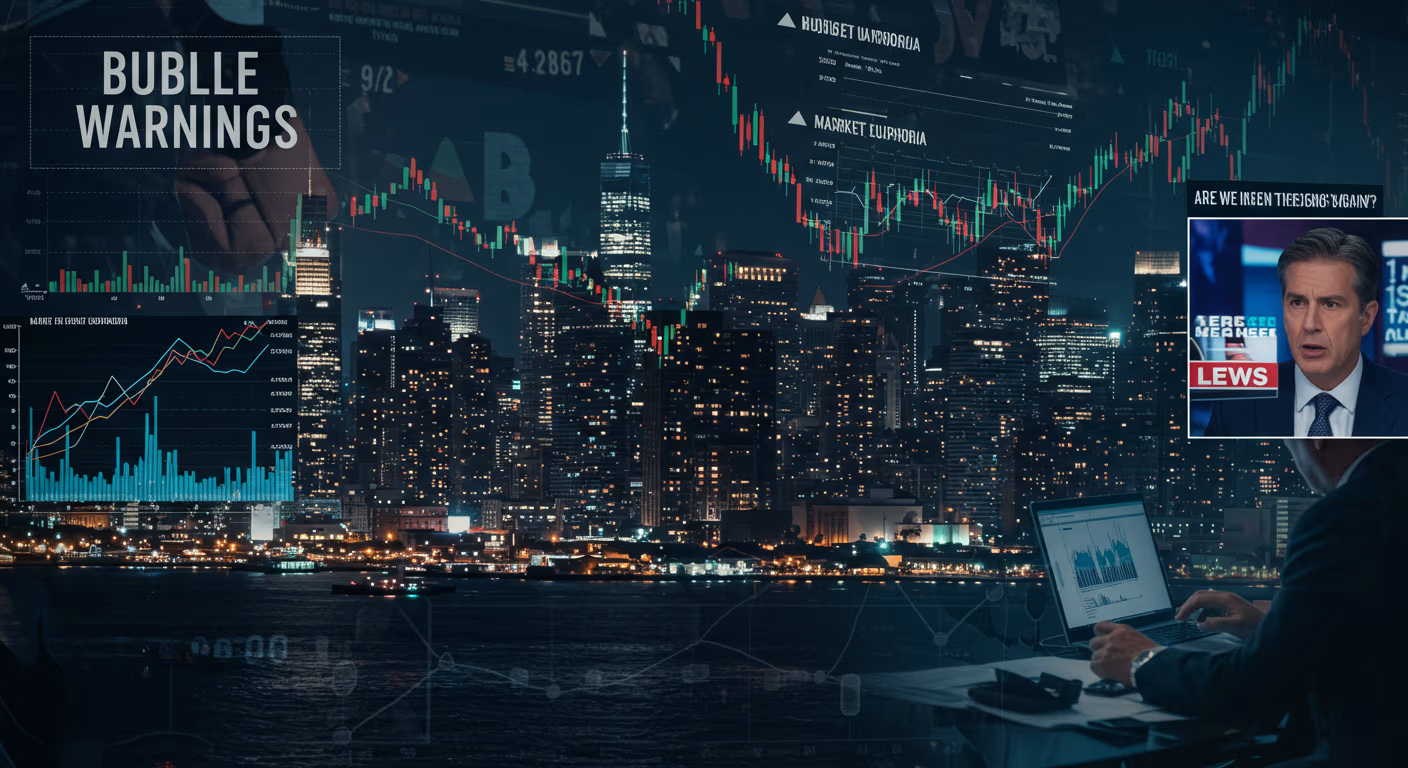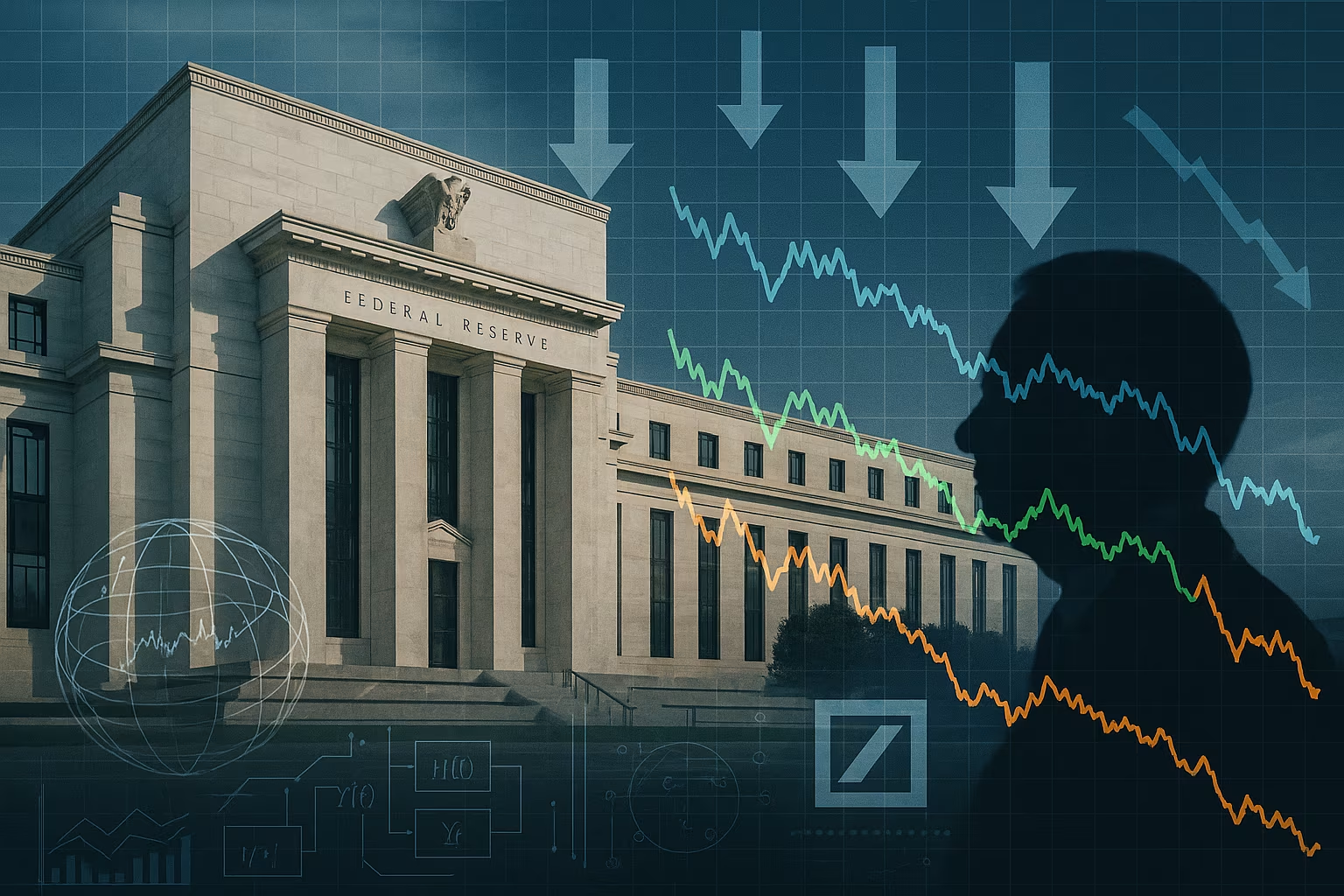In the ever-cycling rhythm of financial markets, periods of growth and optimism are often followed by moments of correction and reflection. As of 2025, investor sentiment is teetering between two extremes: unrelenting market euphoria and rising bubble warnings. Fueled by technological innovation, abundant liquidity, and fear of missing out (FOMO), many sectors are soaring to record highs. Yet, beneath the surface lies a troubling question: Are we inflating another speculative bubble?
From soaring tech stocks and artificial intelligence startups to surging real estate valuations and tokenized assets, today’s markets echo the familiar euphoria seen before the dot-com crash of 2000, the housing crisis of 2008, and the meme stock frenzy of 2021. The parallels are striking, and they beg for thoughtful examination.
What Is Market Euphoria?
Market euphoria refers to a state of overwhelming optimism where asset prices are driven more by sentiment than by fundamentals. In such periods, investors often disregard traditional valuation metrics, instead chasing momentum, speculative narratives, and trend-driven enthusiasm.
This psychological phenomenon is typically accompanied by:
- Parabolic price charts
- Surge in IPOs or newly launched digital assets
- High retail investor participation
- Margin debt increases
- Media hype and celebrity endorsements of investing
Euphoria is seductive. It fuels fast gains and reinforces the belief that “this time is different.” But history consistently shows that such phases are unsustainable.
Signs of a Potential Bubble in 2025
While no one can predict with precision when a bubble will burst, several indicators suggest that parts of the financial market may be overheating:
1. Sky-High Valuations
Major stock indices are trading at elevated price-to-earnings (P/E) ratios. Some sectors, particularly those linked to artificial intelligence, quantum computing, and clean tech, have seen companies with little or no profits reach multi-billion-dollar market caps.
2. Excessive Retail Speculation
Retail investors now account for a larger portion of daily trading volume than ever before. Many are leveraging margin accounts, trading options aggressively, or pouring money into meme-like assets without understanding the fundamentals.
3. Surging Asset Classes With No Clear Revenue Models
We’re witnessing new asset classes—ranging from digital collectibles to AI-generated intellectual property tokens—gaining valuation at breakneck speed, often with unclear long-term viability or earnings pathways.
4. Massive Fund Inflows
The past year has seen record inflows into thematic ETFs, venture capital rounds, and speculative sectors. While this can reflect long-term growth potential, the rate and volume of capital inflow suggest momentum-chasing behavior.
5. Disregard for Risk
Traditional measures of risk—such as geopolitical tensions, rising interest rates, and corporate debt—are being ignored or quickly shrugged off in favor of bullish narratives. When fear is low and complacency high, risks are often mispriced.
The Psychology Behind the Euphoria
Investors are emotional beings. Euphoria typically follows a period of strong performance and media-driven hype. As more people jump in and profits multiply, a herd mentality takes hold. Those on the sidelines fear being left behind. As prices rise, early investors feel validated, and new investors arrive believing in infinite upside.
But this emotional cycle is deceptive. During bubbles, logic gives way to belief. The market no longer reflects underlying business fundamentals—it reflects confidence, momentum, and collective speculation.
The problem is that once the bubble bursts, the very emotions that drove it—optimism and greed—quickly reverse into panic and fear, often leading to rapid and severe selloffs.
Historical Echoes: Learning From Past Bubbles
Understanding today’s risks requires reflecting on past euphoria-driven collapses:
- Dot-Com Bubble (Late 1990s – 2000): Investors poured billions into internet companies, many of which had no profits. When sentiment shifted, valuations collapsed, and trillions were wiped out.
- Housing Bubble (2005–2008): Cheap credit and speculative real estate investments inflated prices. The eventual collapse triggered a global financial crisis.
- Crypto and Meme Stock Mania (2020–2021): Assets like GameStop and Dogecoin surged on hype and retail coordination. While some made short-term gains, many suffered losses when the momentum faded.
While each bubble had different triggers, they shared a common theme: markets detached from reality.
Is This Time Really Different?
Every generation of investors believes it has discovered a new frontier. In 2025, many argue that innovation—especially AI, green tech, and digital assets—has changed the game. And to be fair, some of these technologies do hold transformative potential.
However, transformative potential does not justify unlimited valuation. Great companies can still be overvalued. Promising technologies can still be overhyped. The fundamentals—cash flow, profitability, competitive positioning—still matter.
The mantra “this time is different” is often the prelude to a hard lesson in humility. Sustainable innovation must be grounded in financial reality, not speculative fantasy.
How Investors Can Protect Themselves
Being cautious doesn’t mean staying out of the market. It means understanding the risks, staying diversified, and avoiding emotional decision-making. Here are key principles for navigating euphoric markets:
1. Revisit Fundamentals
Before investing in any asset, ask: What does the company or asset actually produce? What are its revenues, margins, and growth outlook? If these answers are unclear, the risk is high.
2. Avoid Herd Mentality
Just because a stock or sector is popular doesn’t mean it’s a smart investment. Focus on your own financial goals, not what’s trending online.
3. Maintain a Long-Term Perspective
Short-term gains are tempting, but the most successful investors are those who think in decades, not days.
4. Rebalance Regularly
If certain assets have grown disproportionately in your portfolio, consider rebalancing to maintain alignment with your risk tolerance.
5. Understand the Liquidity Trap
Many speculative assets are easy to buy and hard to sell, especially during a correction. Ensure you can exit positions if needed.
6. Keep Emotions in Check
Avoid making decisions based on hype, fear, or urgency. If a trade feels too good to be true, it probably is.
Regulation, Media, and the Role of Institutions
While retail investors play a growing role in shaping market sentiment, institutions, regulators, and media platforms also bear responsibility. Regulators must enforce transparency, prevent manipulation, and protect inexperienced investors from predatory practices.
Media and influencer-driven content must evolve as well. While financial education is vital, sensationalist headlines and social media hype often amplify euphoria, encouraging risky behavior.
Institutions, for their part, must balance innovation with accountability. Responsible capital deployment and measured valuations are essential for maintaining long-term trust in financial markets.
A Time for Caution, Not Panic
Market euphoria is not inherently negative. Optimism drives innovation, fuels entrepreneurship, and inspires the future. But when optimism becomes irrational exuberance, risk increases exponentially.
As we navigate 2025’s complex and fast-moving markets, investors would do well to temper excitement with prudence. The warning signs are flashing—not necessarily signaling an immediate crash, but urging caution, discipline, and awareness.
The smartest investors aren’t the ones who chase every trend. They’re the ones who recognize euphoria for what it is, prepare accordingly, and position themselves to thrive—whether the bubble bursts or not.





